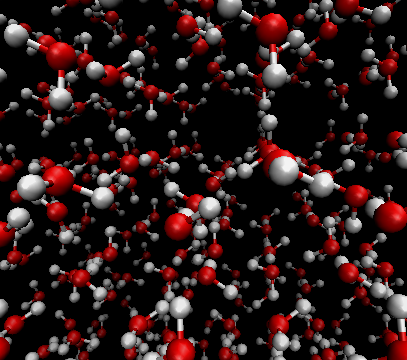The Monte Carlo and molecular dynamics methods. Simulations in different statistical mechanical ensembles. Computation of free energies. Stochastic dynamics. Applications to spin systems, fluids, polymers and biological macromolecules.
SI2530 Computational Physics 7.5 credits

Simulation methods, mainly MonteCarlo and molecular dynamics.
Information per course offering
Information for Autumn 2025 Start 25 Aug 2025 programme students
- Course location
AlbaNova
- Duration
- 25 Aug 2025 - 24 Oct 2025
- Periods
Autumn 2025: P1 (7.5 hp)
- Pace of study
50%
- Application code
51466
- Form of study
Normal Daytime
- Language of instruction
English
- Course memo
- Number of places
Places are not limited
- Target group
- No information inserted
- Planned modular schedule
- [object Object]
- Schedule
Contact
Course syllabus as PDF
Please note: all information from the Course syllabus is available on this page in an accessible format.
Course syllabus SI2530 (Spring 2022–)Content and learning outcomes
Course contents
Intended learning outcomes
To give an introduction to computational physics, which is a third area of physics beside experimental and theoretical physics. The goal is that the students should be able to:
- To understand the difference between simulations and other approximative and analytical methods
- To perform simulations and computations with available programs.
- Be able to write simple programs and make modifications of available programs.
- To understand the importance and limitations of a number of basic models with very broad applicability
- Be able to critically judge published results taking into account the limitations of the models and the statistical nature of several of the methods.
Literature and preparations
Specific prerequisites
English B / English 6
Recommended prerequisites
Statistical mechanics corresponding to SI1162, modern physics, and some familiarity with computers and computer programming.
Literature
Examination and completion
Grading scale
Examination
- INL1 - Assignment, 4.5 credits, grading scale: A, B, C, D, E, FX, F
- LAB1 - Laboratory Work, 3.0 credits, grading scale: P, F
Based on recommendation from KTH’s coordinator for disabilities, the examiner will decide how to adapt an examination for students with documented disability.
The examiner may apply another examination format when re-examining individual students.
If the course is discontinued, students may request to be examined during the following two academic years.
Other requirements for final grade
Computer assignments (LAB1; 3 university credits)
Written exercises (INL1; 4,5 university credits).
Examiner
Ethical approach
- All members of a group are responsible for the group's work.
- In any assessment, every student shall honestly disclose any help received and sources used.
- In an oral assessment, every student shall be able to present and answer questions about the entire assignment and solution.